A first-timer’s tour of Iwate in northeastern Japan
Iwate is the second largest and one of the least densely populated of Japan's 47 prefectures. From its dramatic coastline to its spectacular mountains, Iwate offers a wide variety of attractions, including rustic hot springs, a town that once rivaled Kyoto with its culture, unique culinary traditions, and a capital city, which the New York Times ranked second among the places to go in the world in 2023.
Getting to Iwate from Tokyo is convenient as the Tohoku Shinkansen makes multiple stops in the large prefecture, and detailed transportation information about this trip can be found in the access section below. I spent three days in Iwate checking out the various attractions, which I thought were definitely worth the trip and some even worth going multiple times!

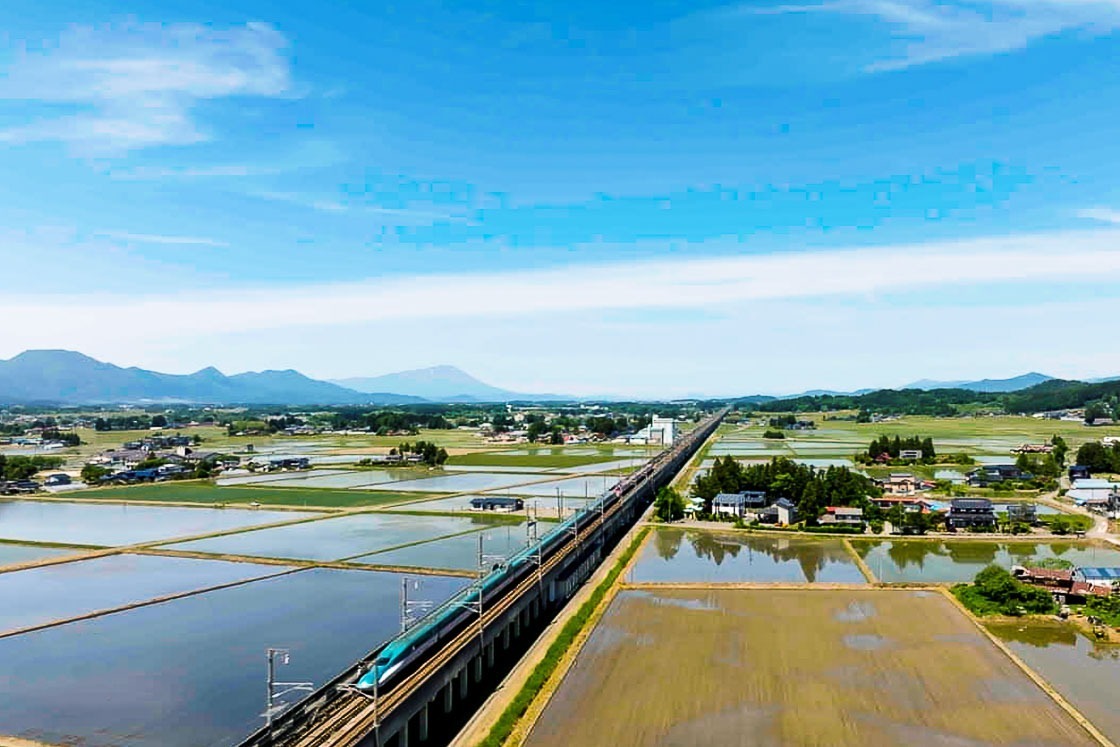
Day 1: Hiraizumi and Osawa Onsen
An approximately two hour bullet train ride from central Tokyo took me to Ichinoseki Station where I transferred to the local line to Hiraizumi, my first spot in Iwate. Hiraizumi was the seat of one of Japan's most powerful noble families of the 12th century and the former cultural and political center of northeastern Japan, rivaling Kyoto, the old capital of Japan. The clan and town declined long ago, but enough cultural treasures remain to make Hiraizumi a UNESCO Cultural World Heritage Site.
I rented a bicycle from a rental shop near the train station and cycled about ten minutes to Chusonji Temple, the most famous and popular site in Hiraizumi. The temple was established almost 1200 years ago and contains several buildings on its grounds. From the bicycle parking area, I made my way up the approximately 130 meter tree-lined main approach into the spacious temple grounds.
Chusonji Temple's main attraction is the gilded Konjikido, which dates back to 1124, and is one of two golden temples in Japan, the other being Kinkakuji, also known as the Golden Pavilion, in Kyoto. The Konjikido is contained inside a larger building, which protects it from the elements, and visitors enter the larger building to view the gold hall. Konjikido's interior and exterior is covered in gold, which is how the building got its name. The golden hall is said to illustrate Buddhist paradise, and in addition to the gilded walls, one can also see intricate and elaborately decorated Buddhist artwork inlaid with ivory and mother of pearl.
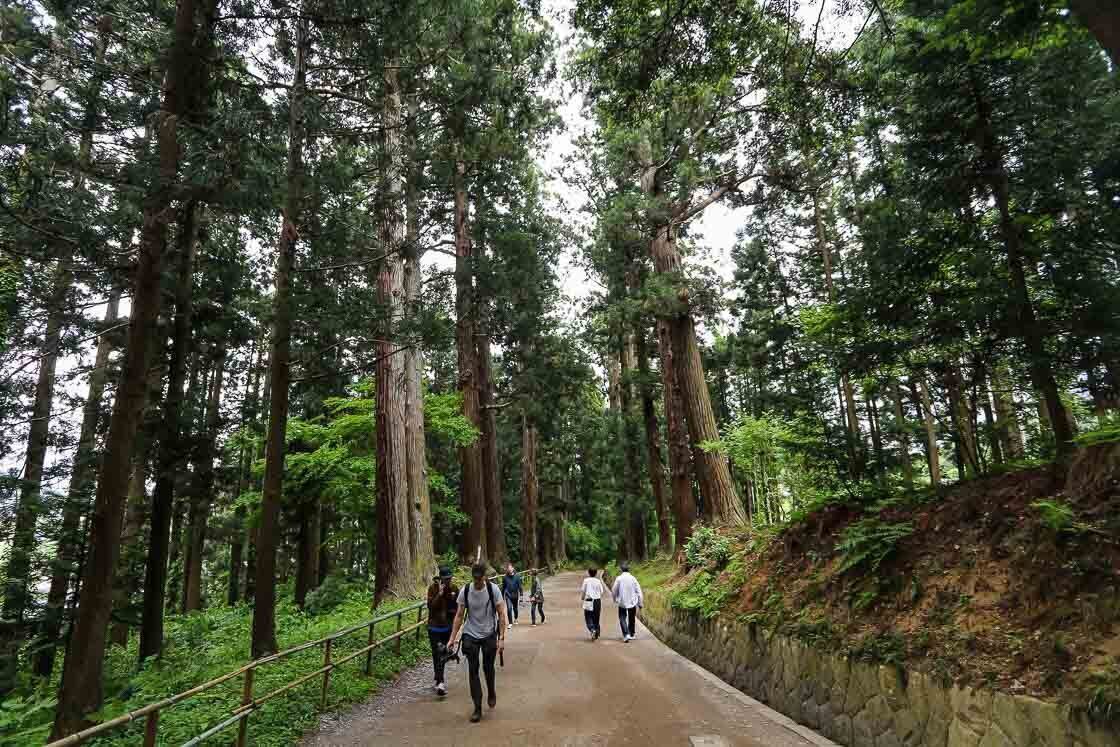
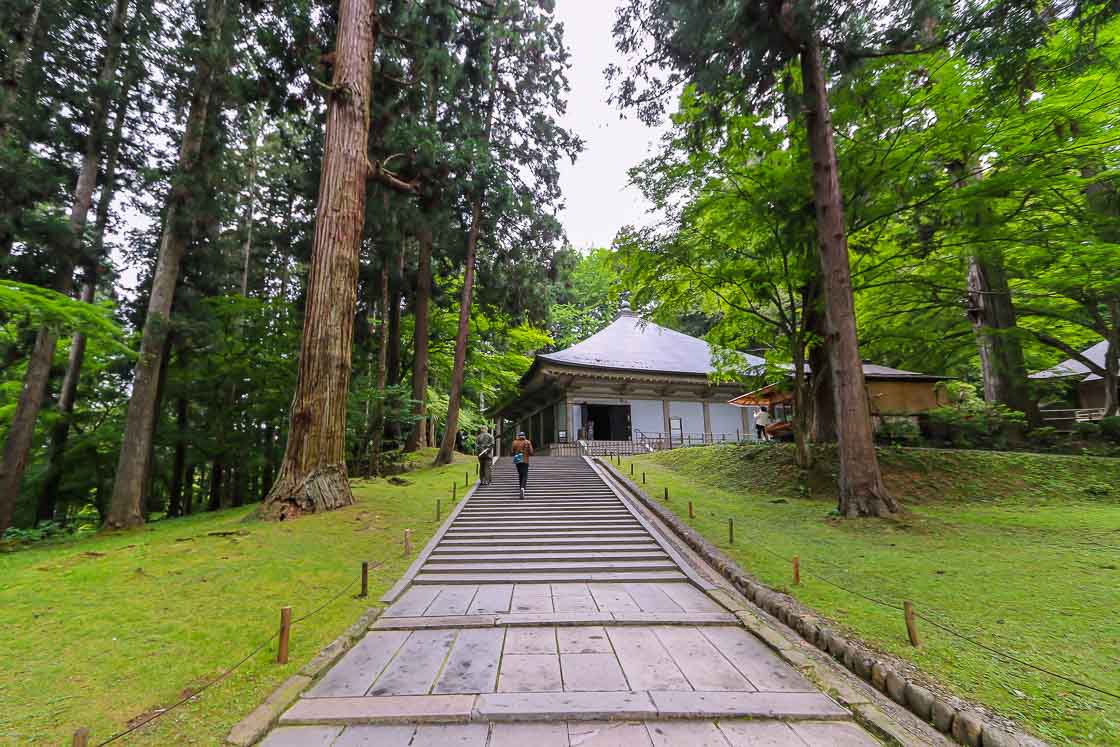
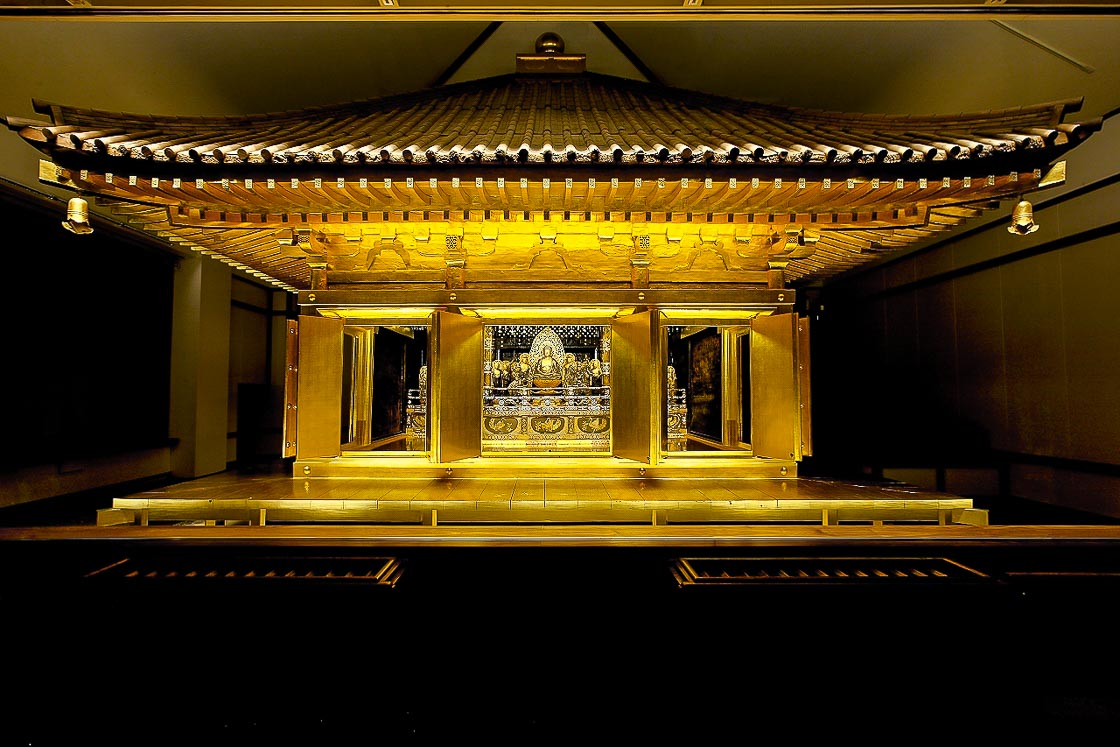

After Chusonji Temple, I got back on my rental bicycle and made my way to Takkoku no Iwaya, a temple built into the face of a cliff, and one of the major attractions in Hiraizumi. Founded over 1200 years ago, the temple is dedicated to Bishamonten, one of the four guardian kings in Buddhism. The modest temple grounds contain a main hall built on support beams, which is supposedly modeled after the famous Kiyomizudera in Kyoto, a few auxiliary buildings and a carving of Buddha in the rock face.
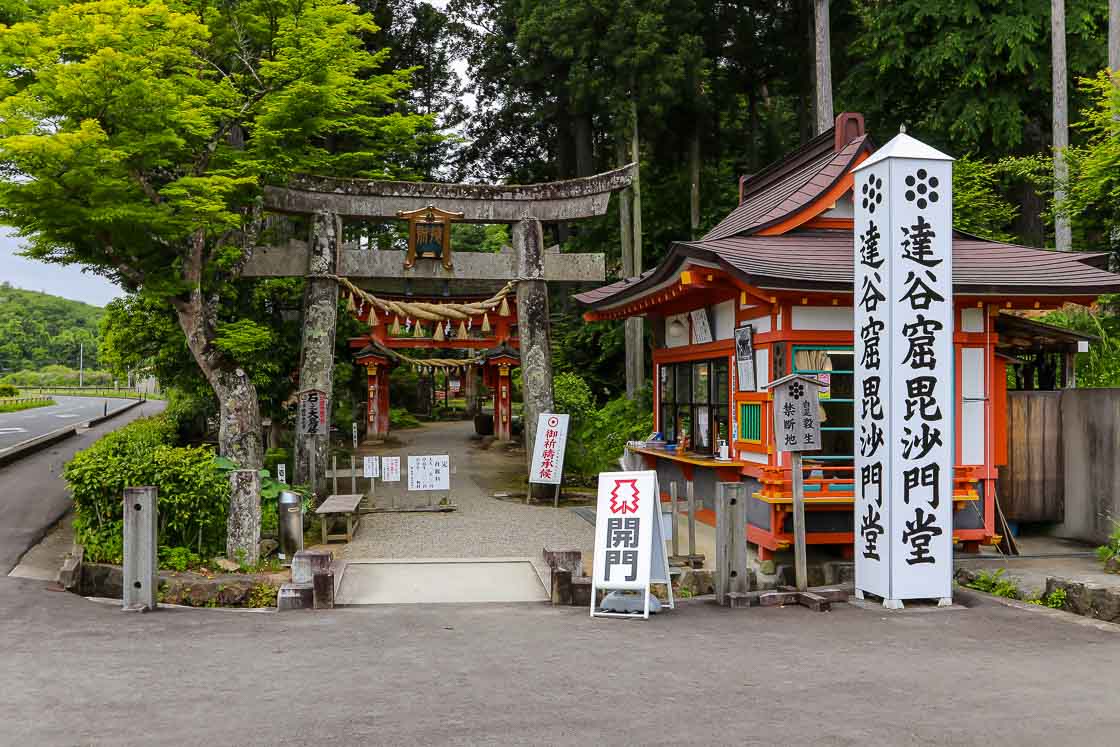
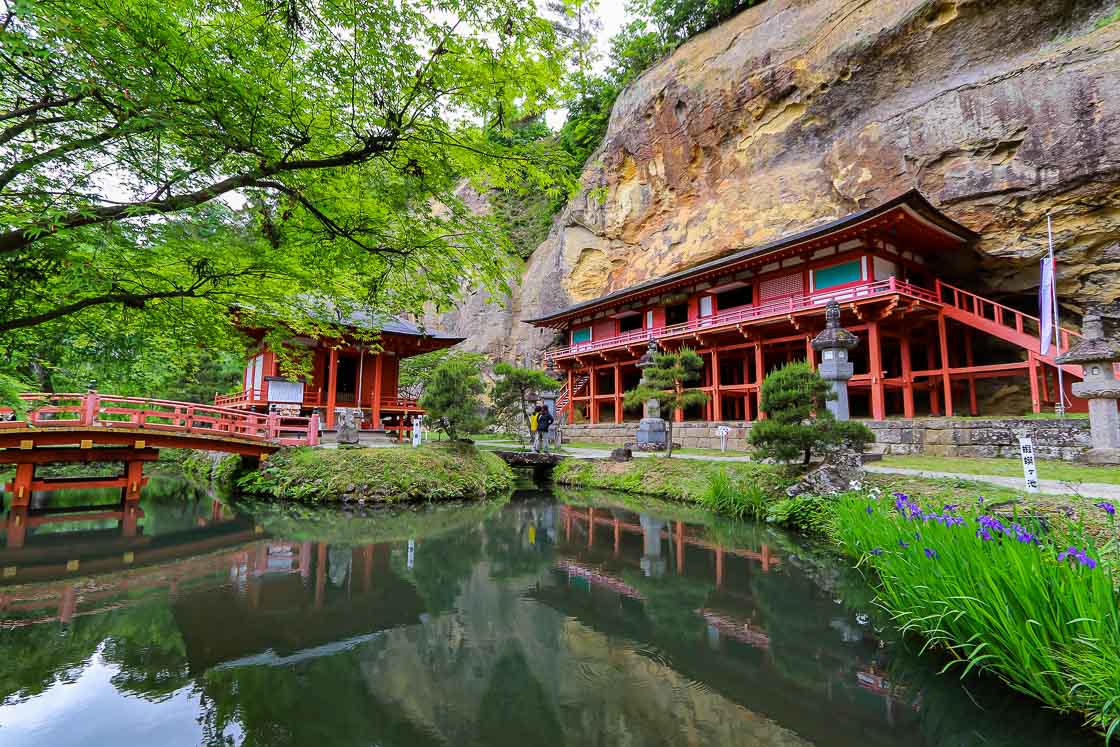
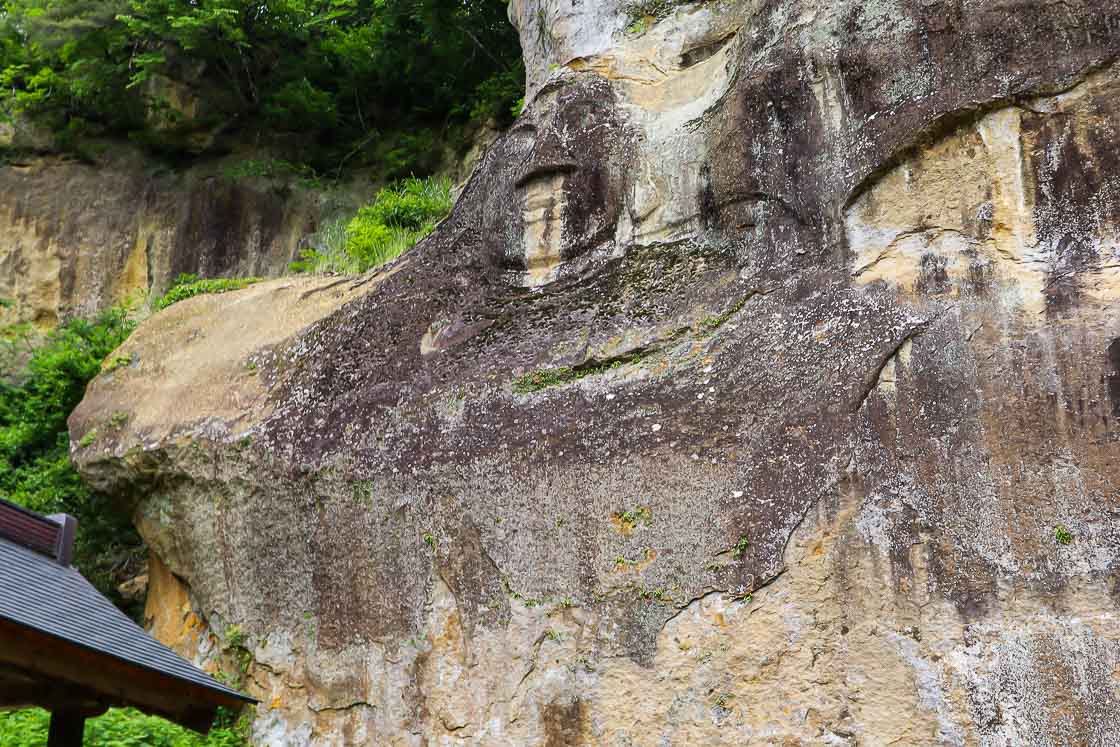
From Takkoku no Iwaya, I returned my bicycle at Hiraizumi Station, then headed to Osawa Onsen, one of the hot springs in Hanamaki City. It took about an hour by train and bus to get to Osawa Onsen from Hiraizumi.
Legend has it that over 1200 years ago, a military commander, who was shot with a poisoned arrow, healed from his injuries in the hot springs of Osawa. Since then, the healing properties of Osawa Onsen have remained undisputed, and famous people over the centuries have come here to bathe in the waters and enjoy the surrounding greenery.
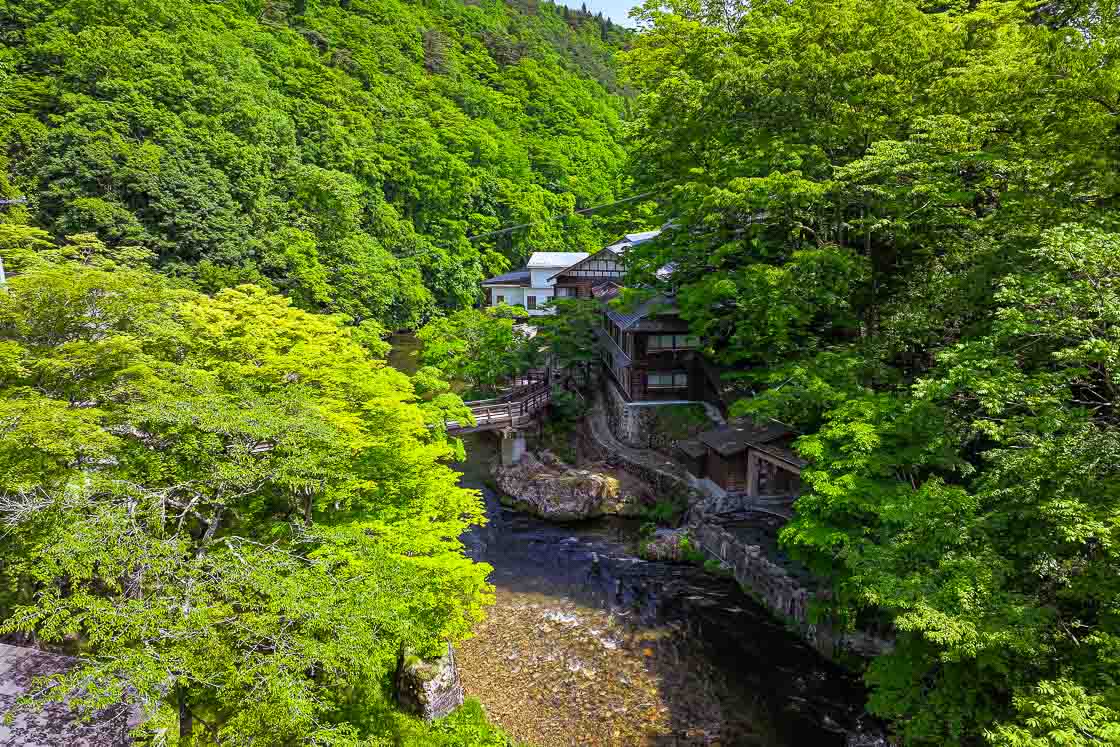
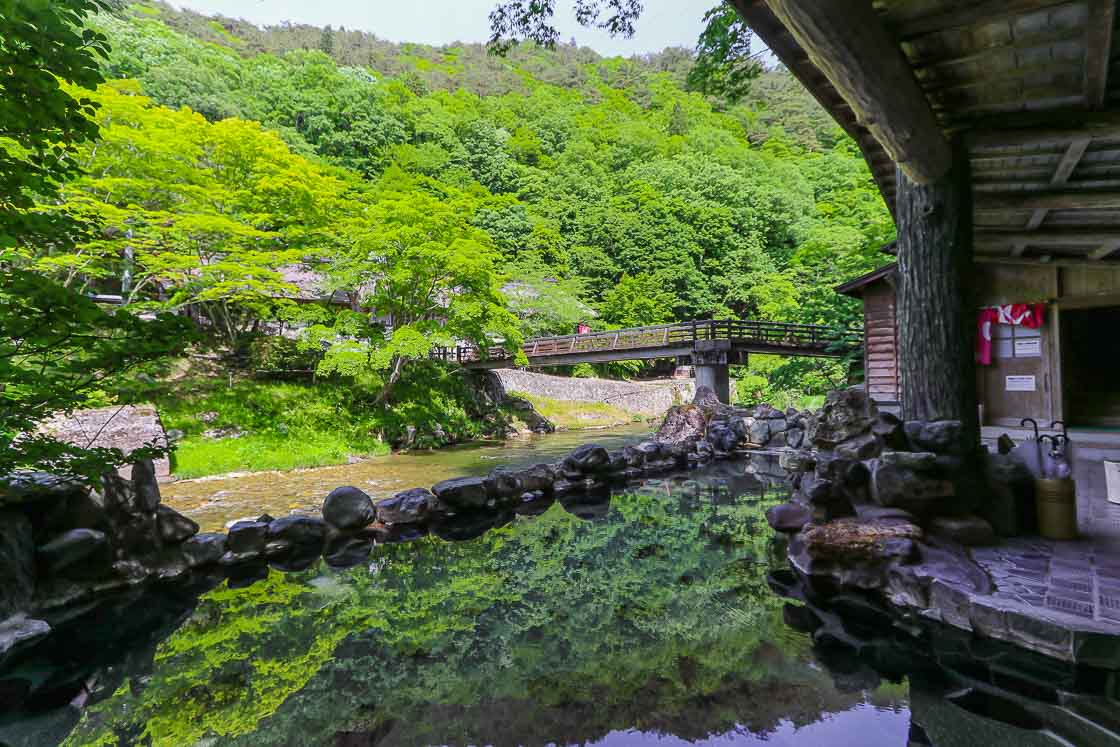
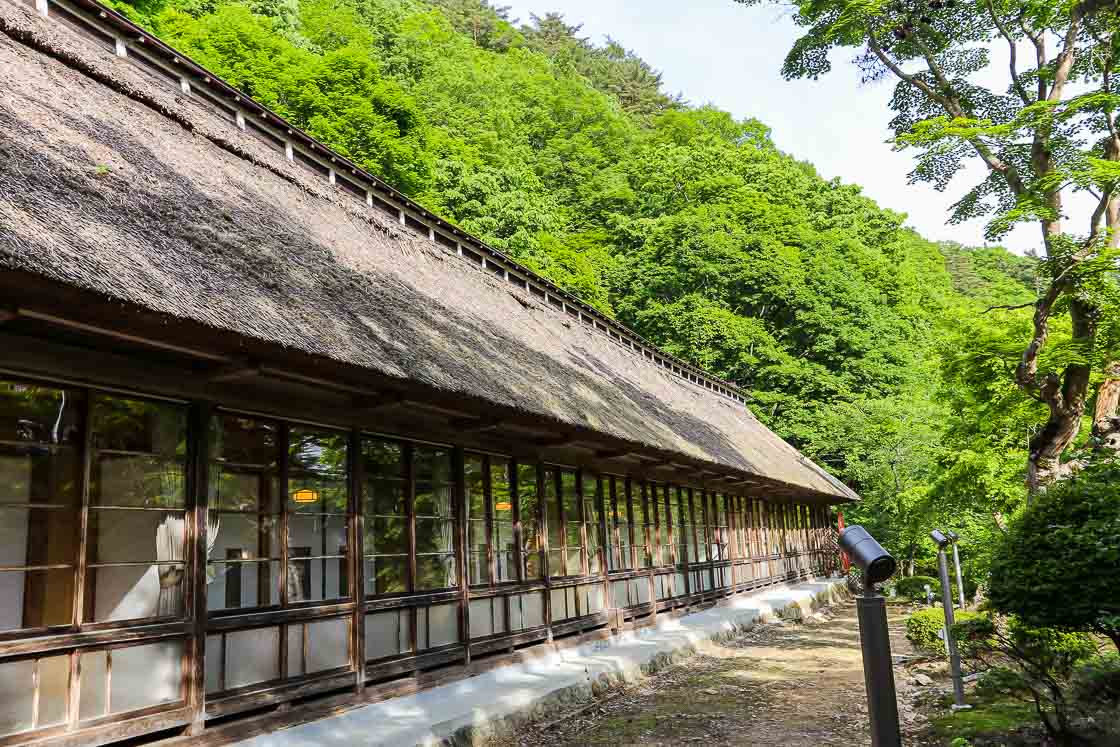
In addition to its full-service ryokan accommodation, one of the highlights at Osawa Onsen is its old-fashioned self-catering toji facility, which offers guests cheap and basic accommodation with shared toilets and a common kitchen. Hot springs were originally a place for toji, which was staying at an onsen for extended periods for the health benefits that came through regular bathing in the hot spring waters. Over time, the purpose of visiting an onsen switched to focus more on relaxing and sightseeing. As hot spring resorts shifted to cater to the shorter recreational stays, toji slowly fell out of fashion, and as a result, not many remain in Japan today.
Guests who stay in the ryokan, which was what I did, have access to all of the baths in Osawa Onsen, while those who stay in the toji facility have limited bath access. I made sure to check out some of the baths before going for dinner, which was included in my stay.
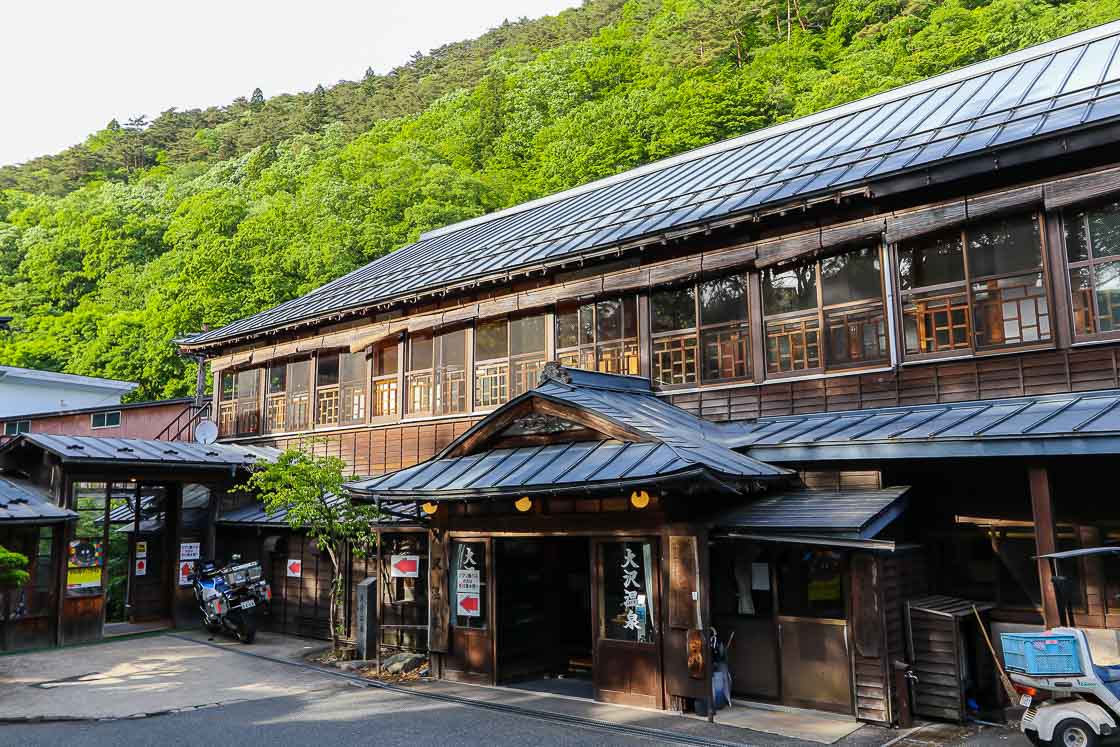
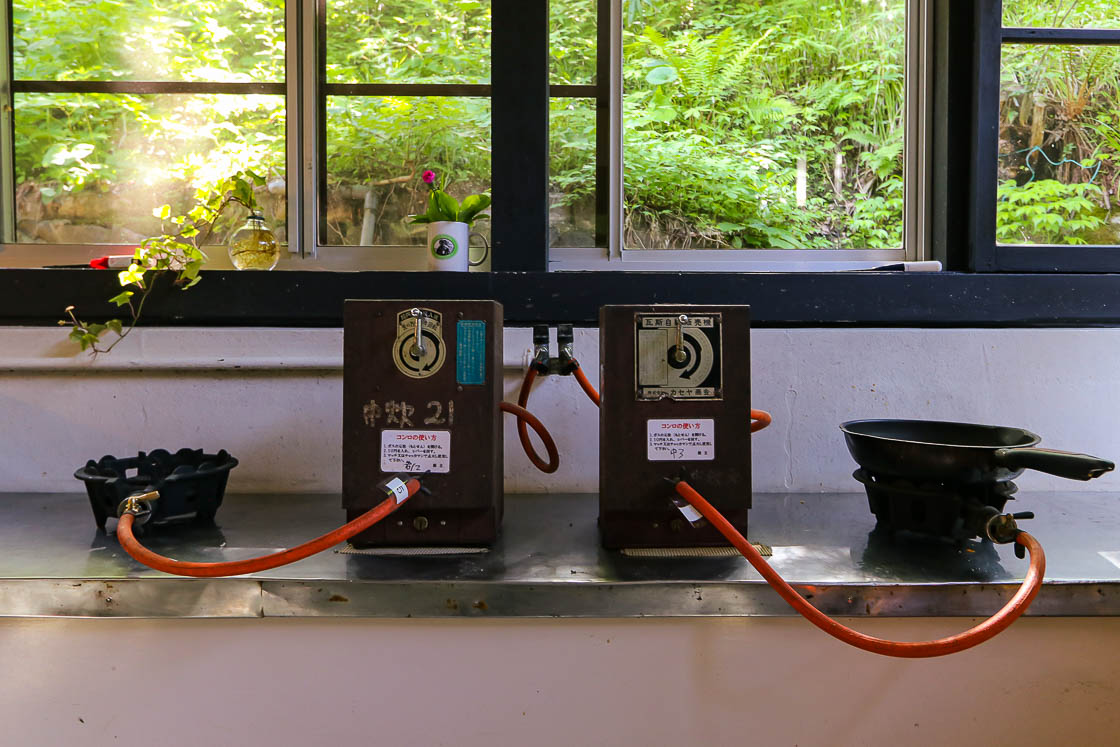
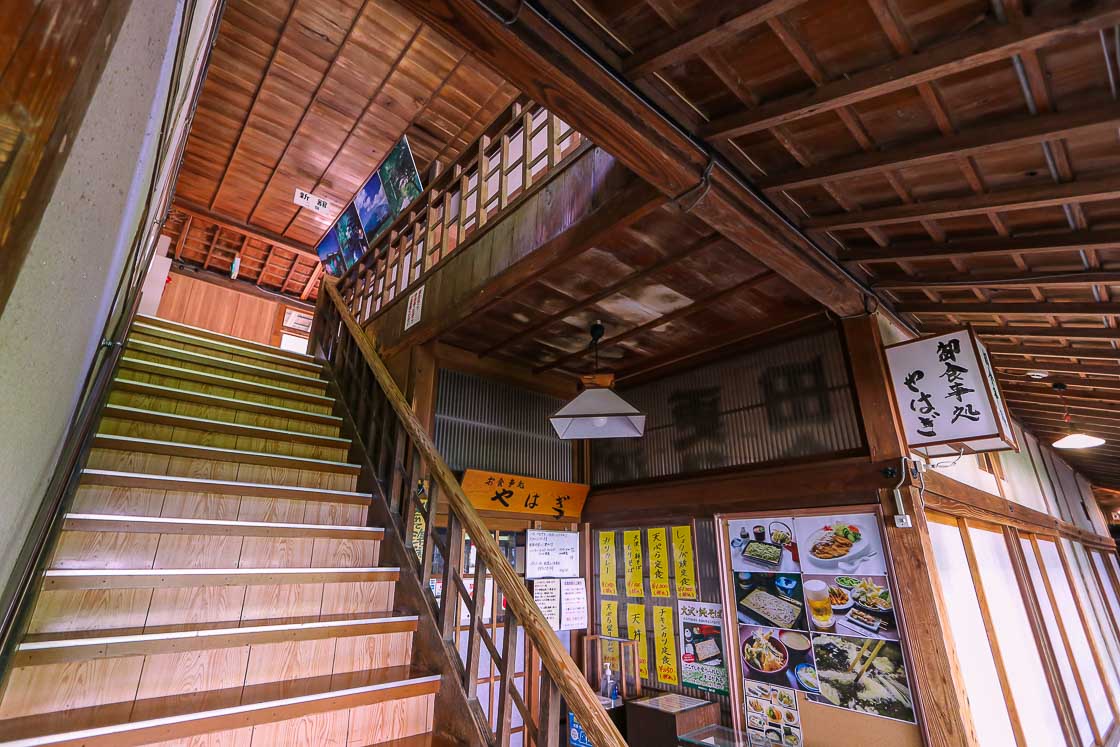
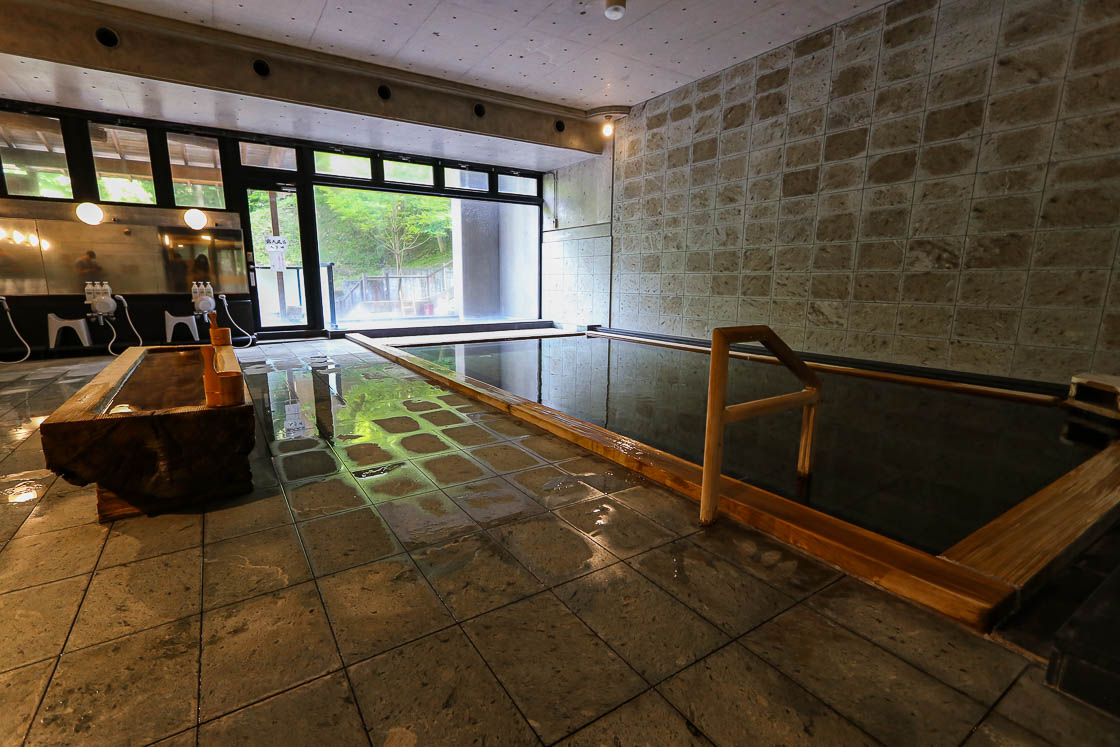
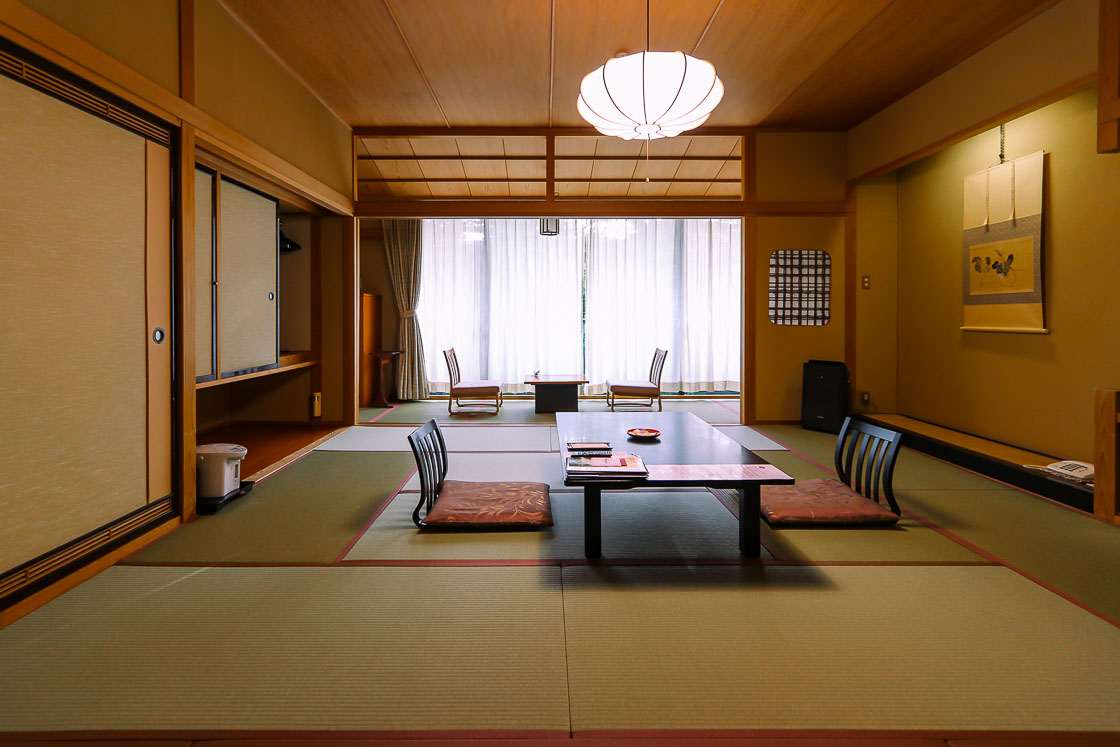
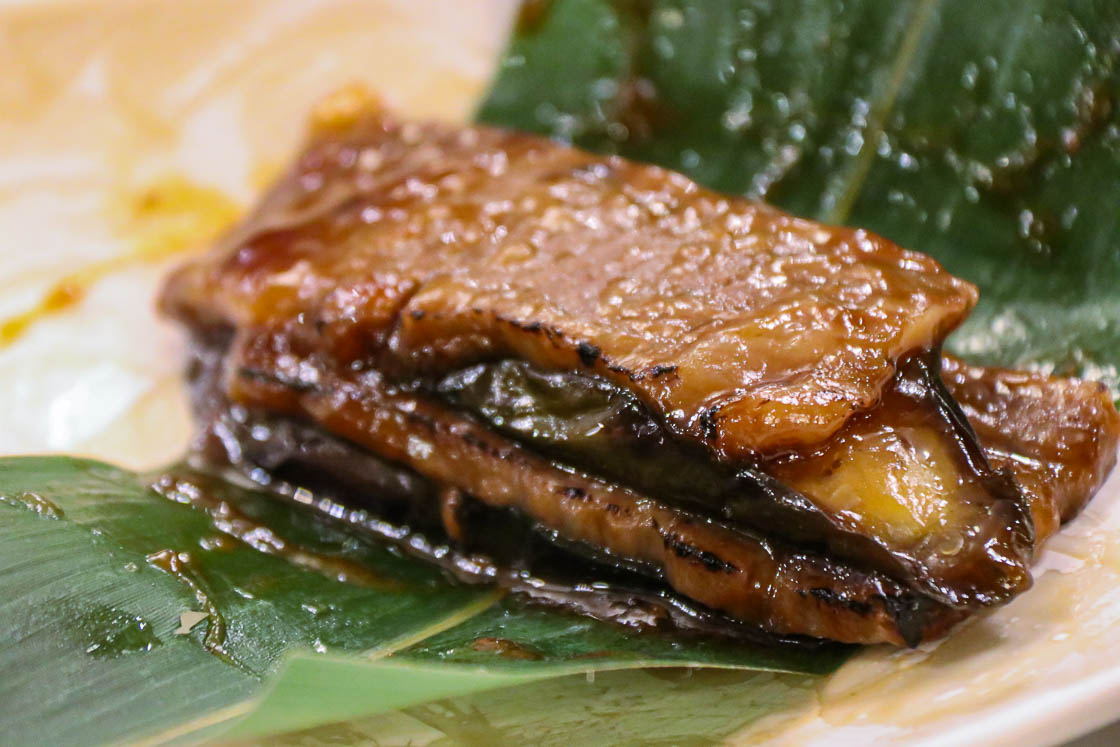

Day 2: Morioka, the capital city of Iwate
After breakfast, I set off for Morioka, the capital city of Iwate Prefecture. The Morioka domain used to be ruled by a feudal lord named Nambu, and Morioka Castle was where he and his descendants ruled the region for centuries. The family's name became synonymous with the domain, and these days, you can find traditional craft with the name Nambu attached to it. One good example is Nambu Tekki which is Nambu Ironware.
Nambu Ironware is a traditional craft of Iwate Prefecture, which is primarily made in Morioka and Oshu cities. The distinctive and traditional Nambu Ironware kettles are highly prized for their simple yet elegant designs, and boiling water in a Nambu Tekki pot is said to produce soft water suitable for making teas.
Central Morioka is easy to explore on foot, which was what I did. In the city, I visited a few Nambu Ironware studios, each displaying their unique touches to the traditional craft. It was nice to see that there were also small, traveler-sized Nambu Tekki items like keychains and ornamental pieces, which made it easy for travelers to bring a piece of Iwate home. I also went to a cozy cafe where I could taste beverages made with water that has been boiled in a traditional kettle.

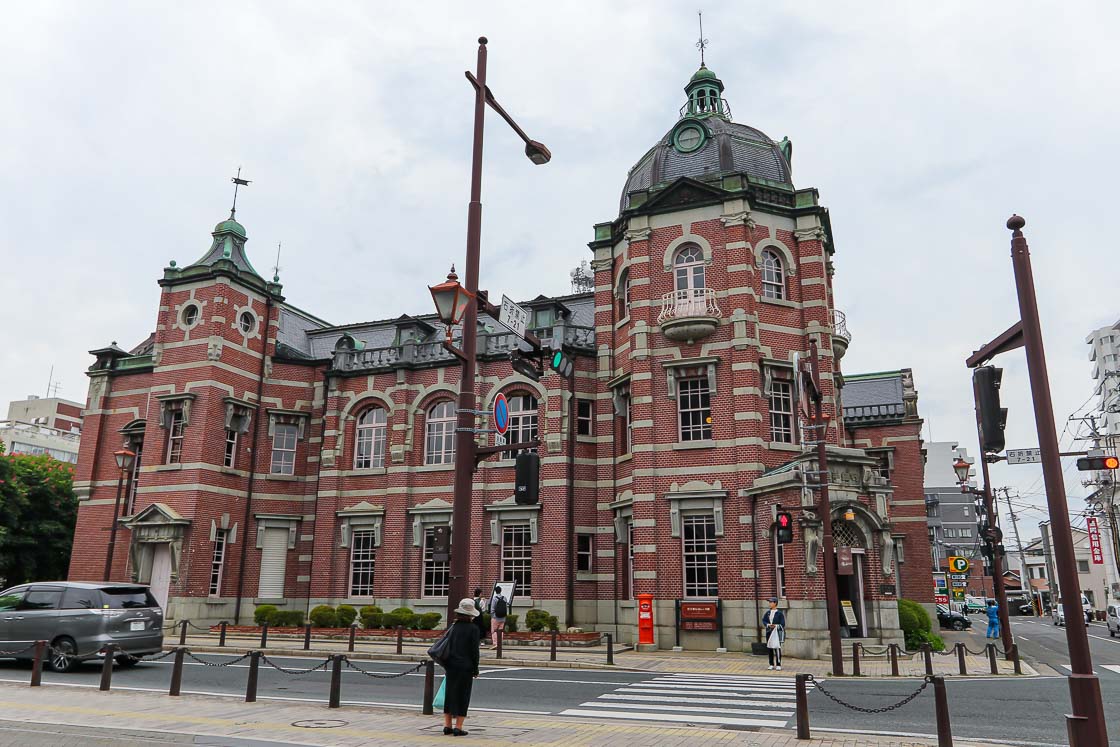
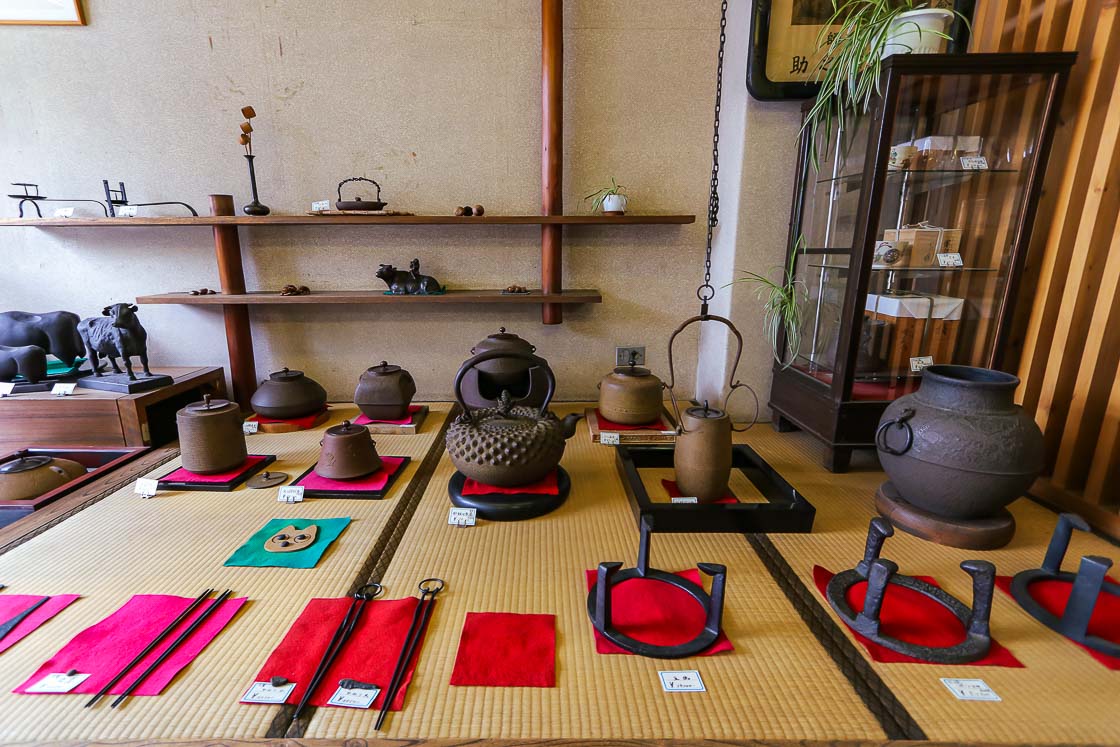

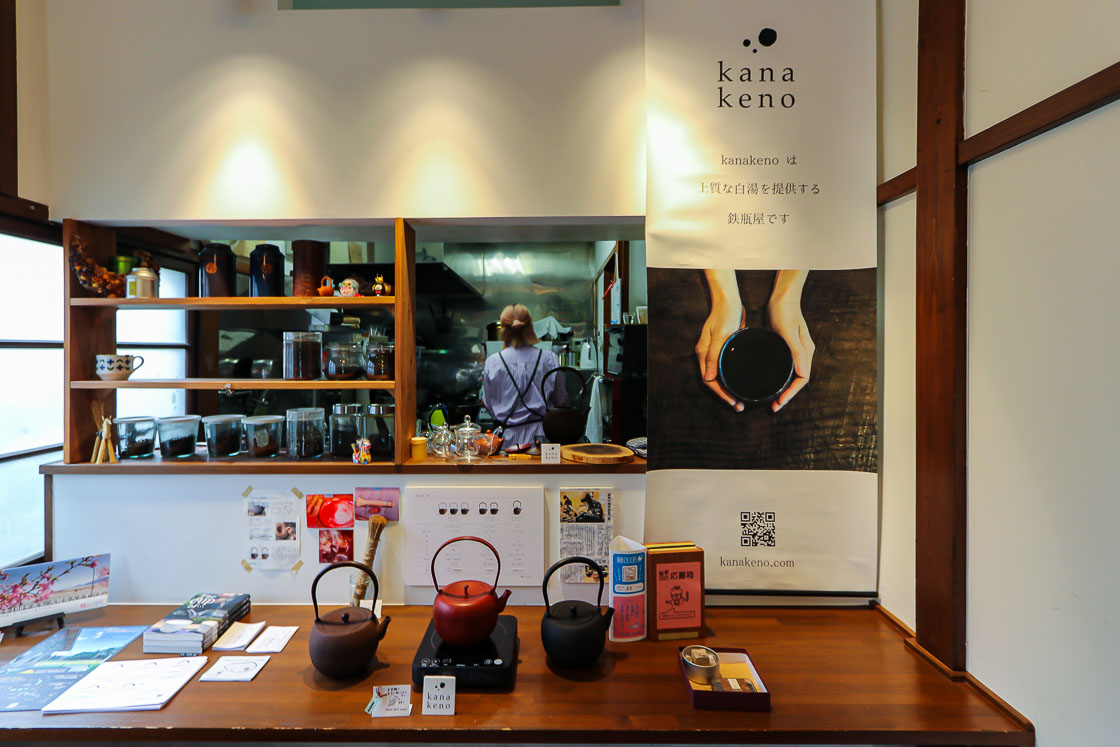
A trip to Morioka is not complete without trying wanko soba, the traditional cuisine in which diners try to eat as many bowls of soba noodles as they can. It's said that this dish has a long history, and today, is a unique food culture in and around Morioka. I went to Azumaya, a long established soba shop that has been offering wanko soba for over a century.
An array of condiments and side dishes are typically served with an order of wanko soba. One bowl of wanko soba noodles is approximately one mouthful. You can add some condiments to your noodles or slurp them down as is. The restaurant staff will keep topping up your empty bowl with another bowl of noodles until you place a lid on your bowl to indicate that you are done. As a rule of thumb, fifteen bowls of wanko soba is equivalent to one normal portion of soba noodles.
The average number of bowls of noodles for women is 30-60 while it's 60-80 for men. According to my server, the record is held by a female competitive eater who downed over 250 bowls!
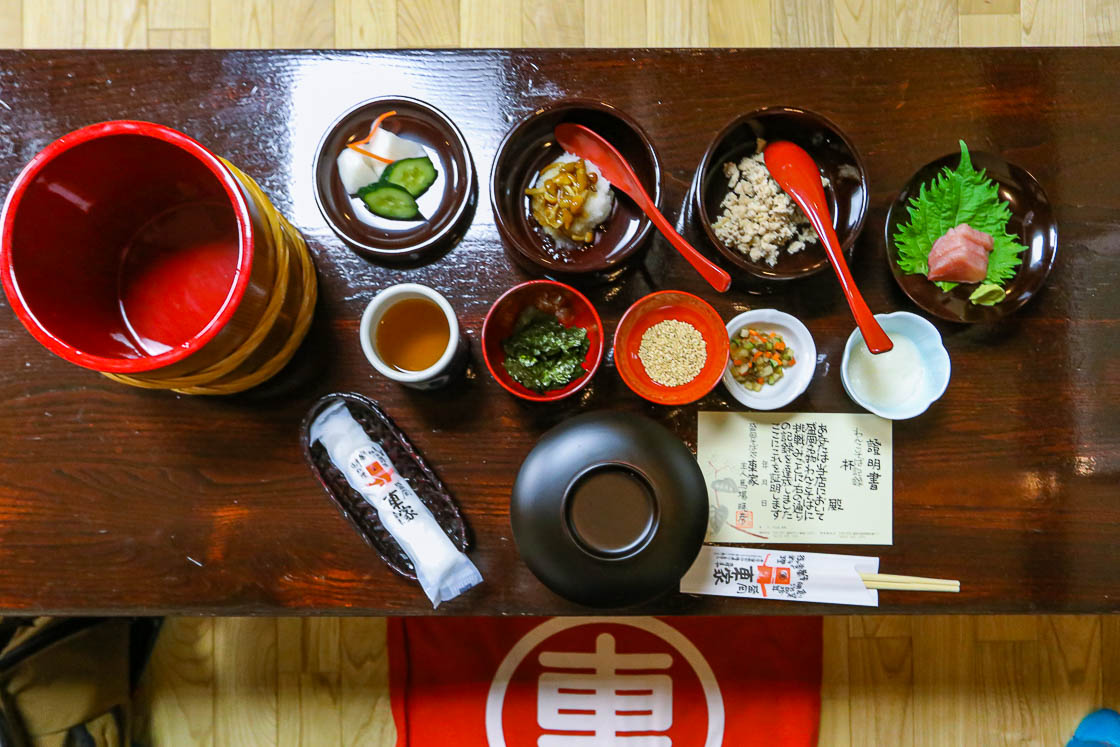

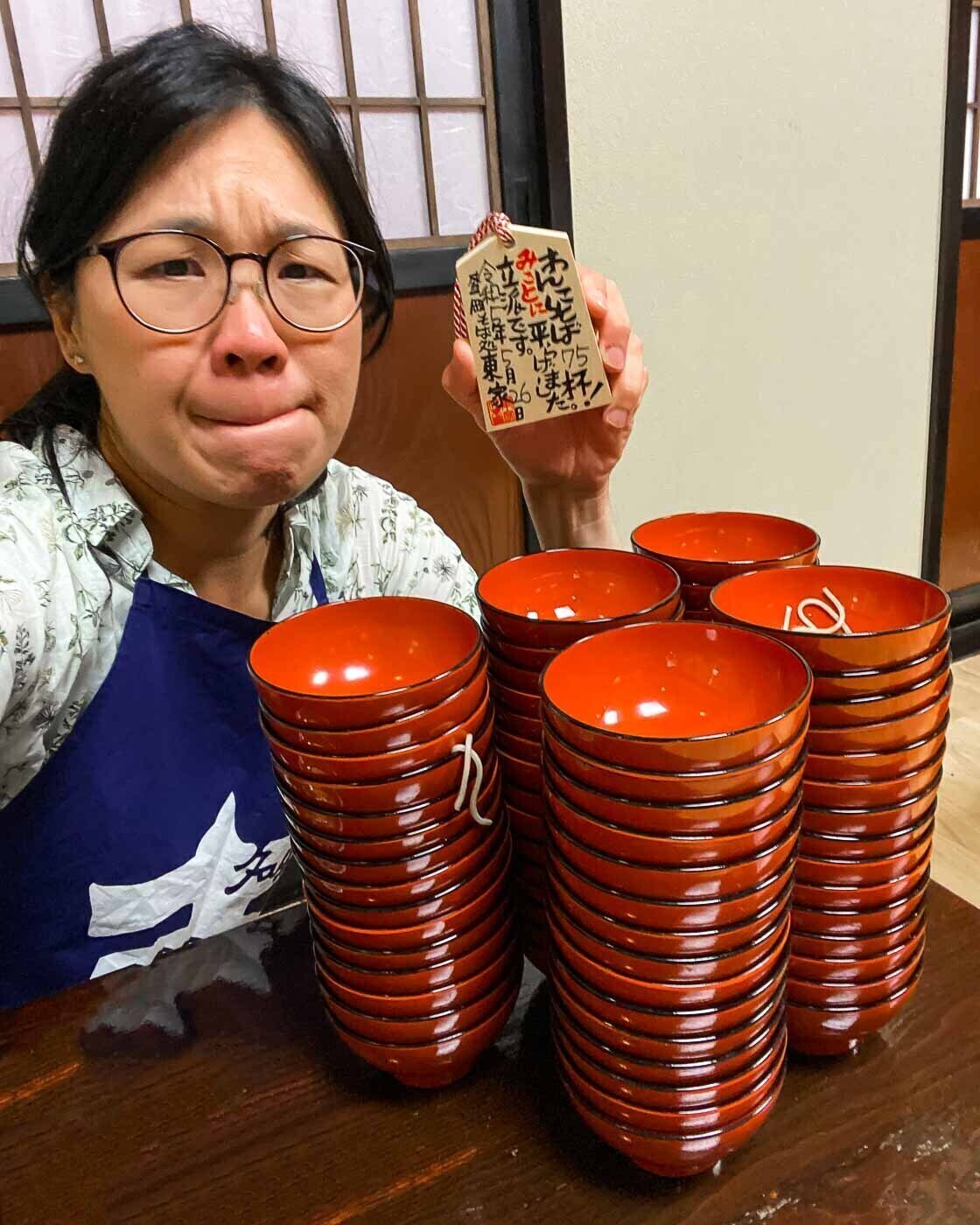
Following that filling meal, it was time to go for a post-lunch stroll to the temple district. My route took me past the Ishiwarizakura Tree, one of the treasures of Morioka, then along the picturesque Teramachi Street, which is lined with many other temples and Nambu Ironware street lights. My goal was Hoonji Temple, which is known for its 500 statues of Buddhist disciples or rakan, which are said to have been carved over a period of four years by 9 artisans in Kyoto.
After that temple visit, I continued on my walking tour of central Morioka, which has in recent years, styled itself as a coffee city and contains various small, independent coffee shops and cafes. I stopped by Nagasawa Coffee, one of the featured places in the New York Times article in which Morioka was ranked second amongst the places to go in 2023. It was a very chill, neighborhood cafe and coffee roaster with nice vibes, and a lovely place to take a coffee break.
To bring my day in central Morioka to a close, I headed to Baeren's Saien Microbrewery, a local craft beer brewery that has been around for 20 years, that also offers small bites. If I had to sum up what Morioka is like, I would say it's a major city with small neighborhood vibes and where you can find lots of independent shops with great personalities all within walking distance. It certainly felt like that after my day out in the city.
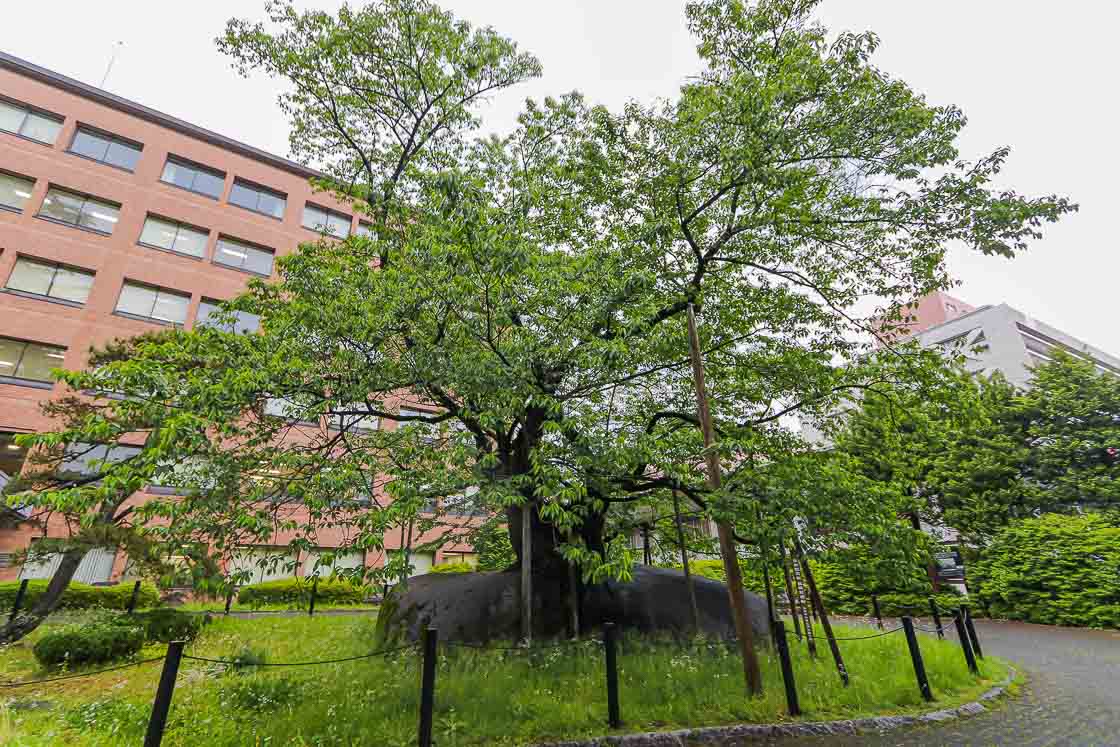
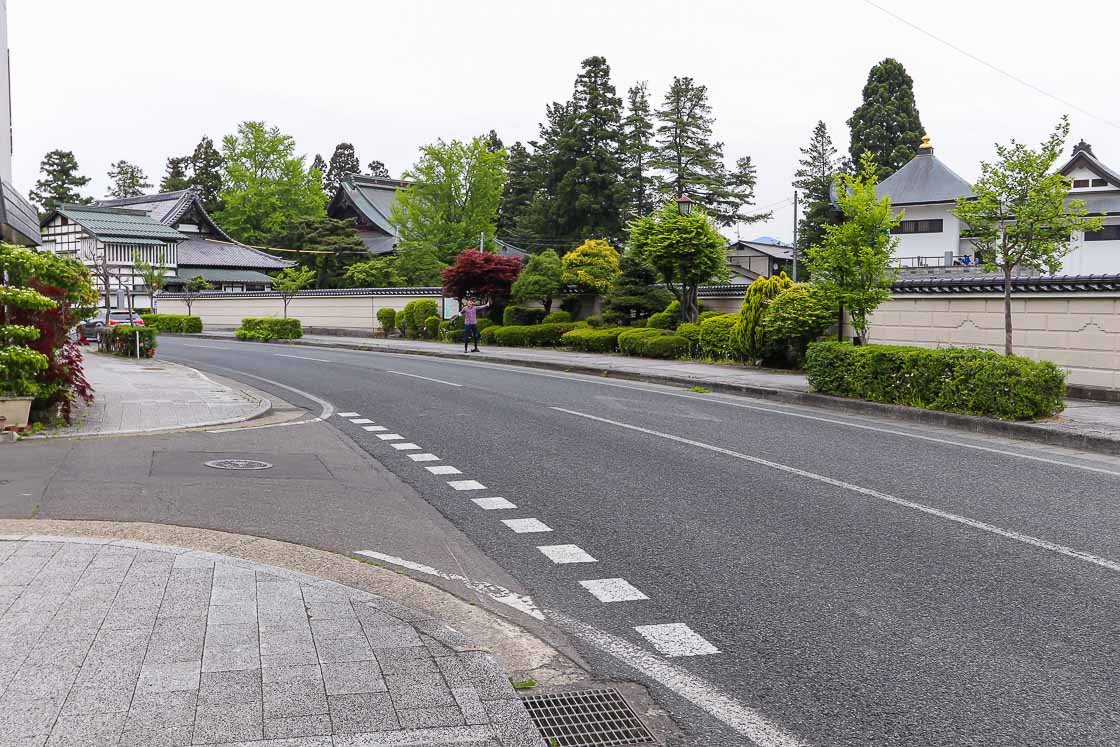
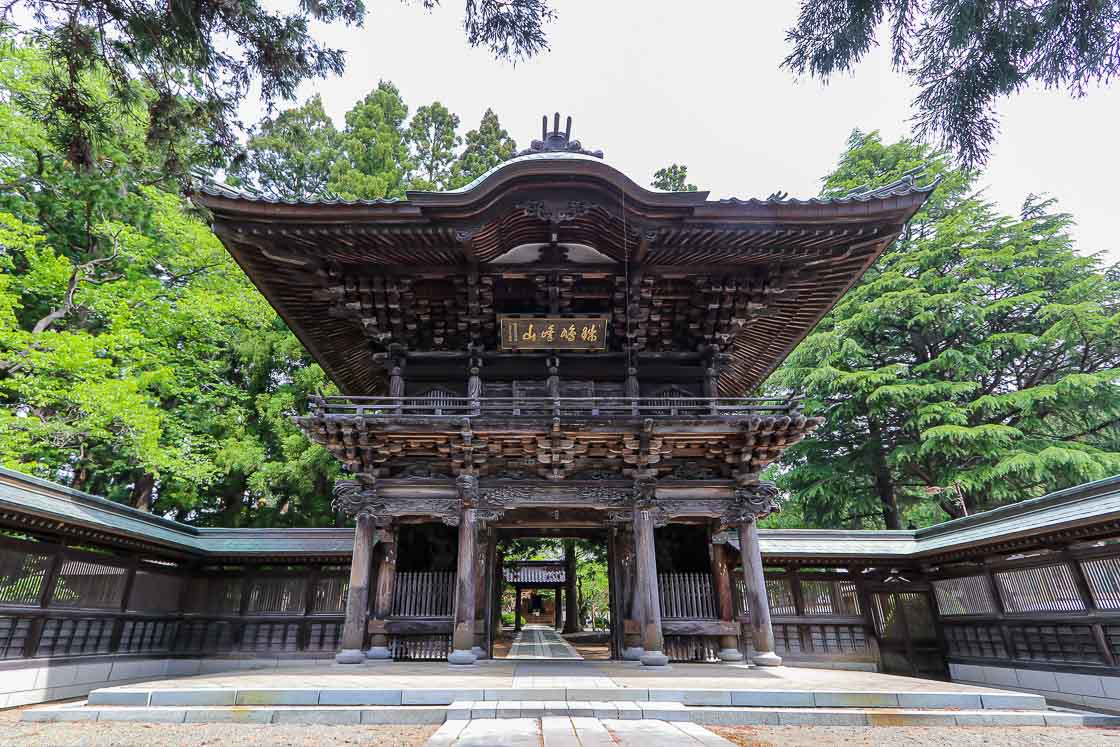
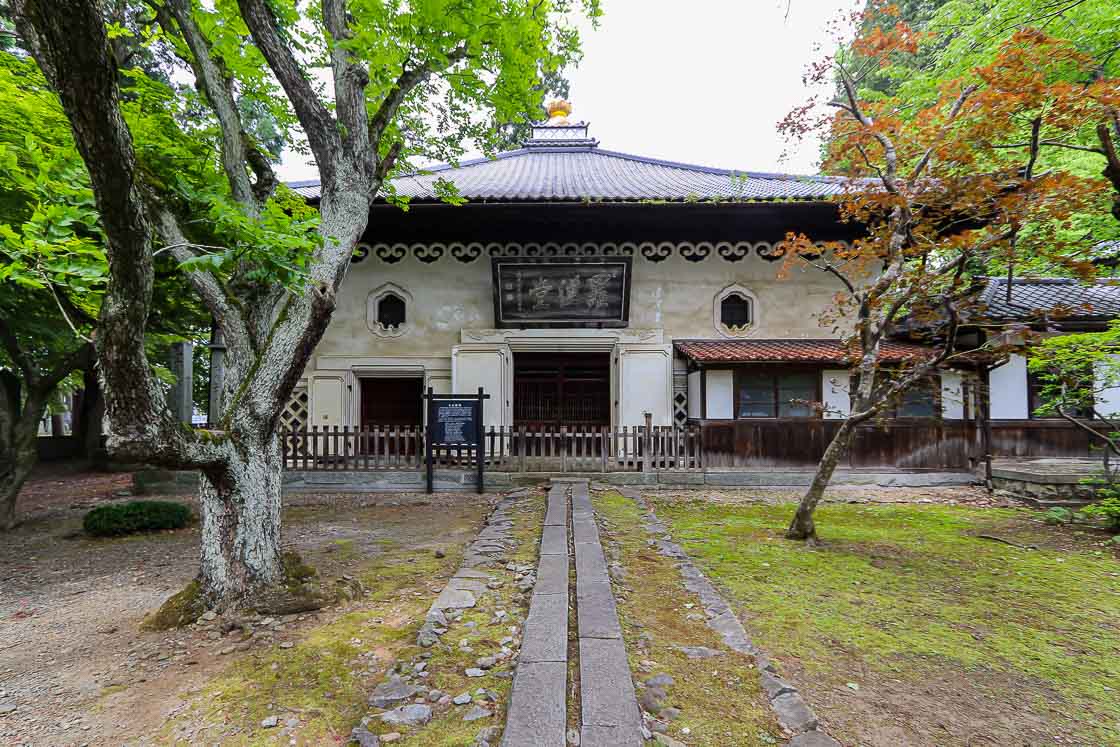
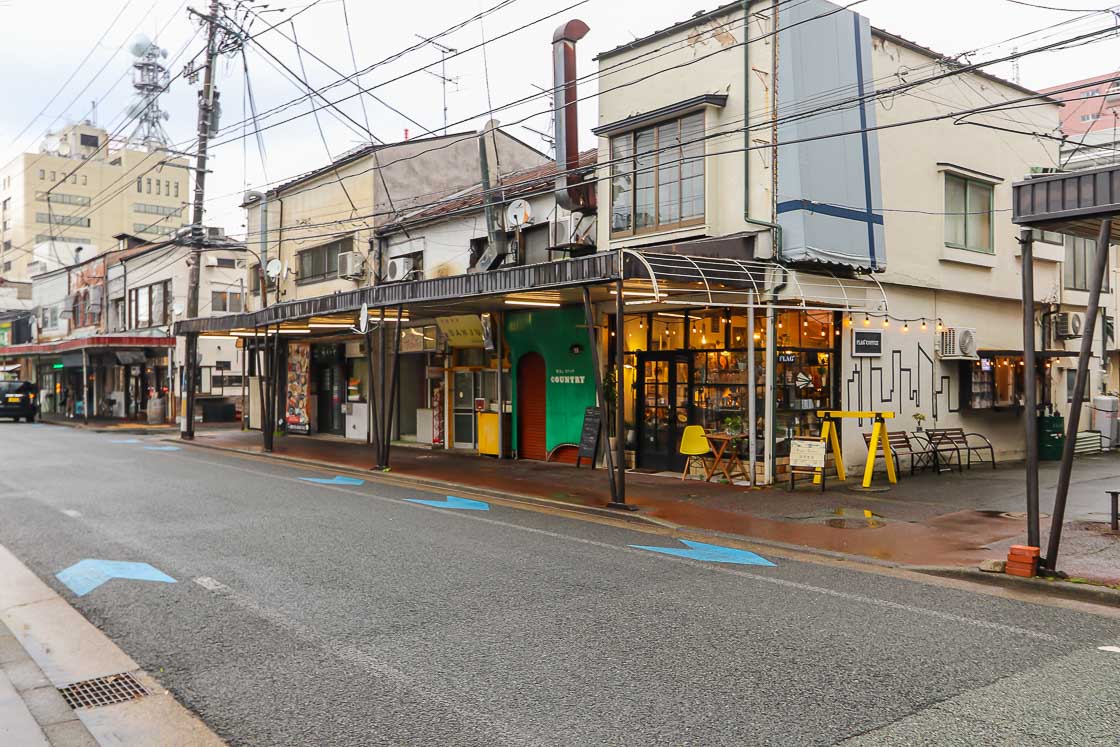

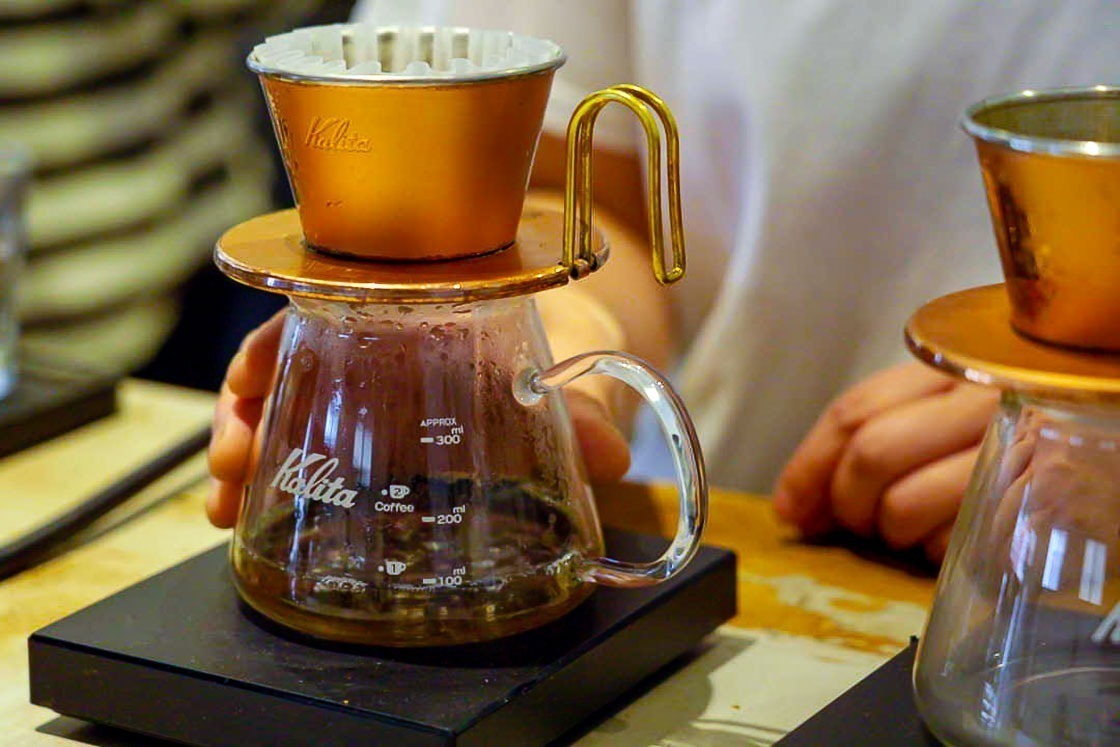
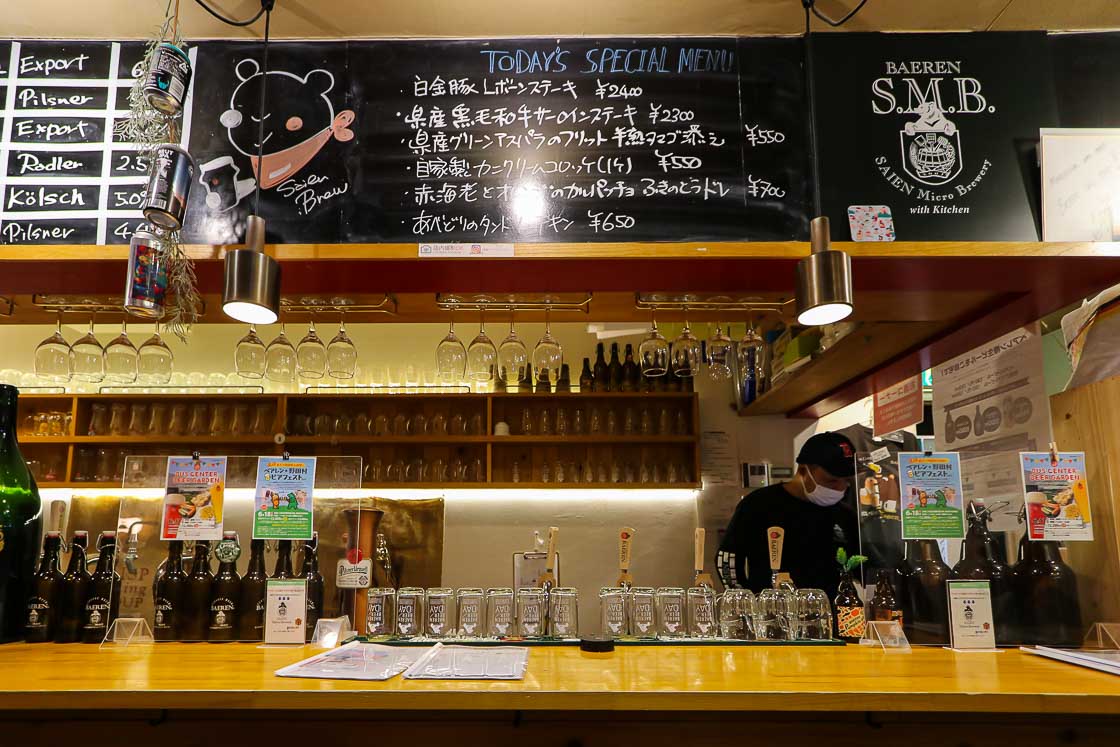
Day 3: Sanriku Coast
My last day in Iwate Prefecture was spent along the Sanriku Coast, which was hit by the 2011 tsunami. I took a scenic and quaint local line from Morioka Station east to the fishing town of Miyako along the Pacific Coast, where I picked up a rental car to get around.
Miyako City was one of the many coastal cities in Iwate Prefecture to be badly damaged by the 2011 tsunami. In Miyako, it claimed the lives of over 500 people and destroyed many homes and businesses. It's been more than a decade since the disaster, and I was glad to see that the recovery process has progressed well.
As a coastal city, seafood is the major local specialty of Miyako, and naturally, that's what I had for lunch. I went to a sushi restaurant near the fishing port, which serves up fresh, local seafood. Then, I went to the port area where I took the Uminekomaru sightseeing boat to Jodogahama, an icon of the Sanriku Coast.
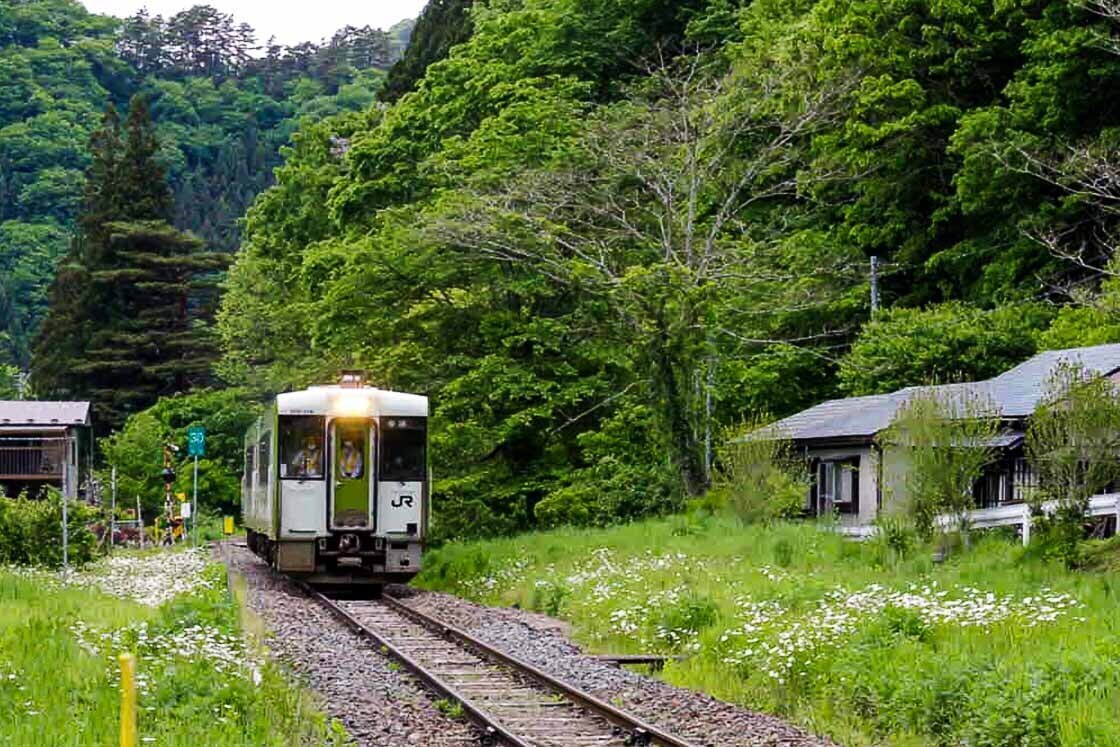
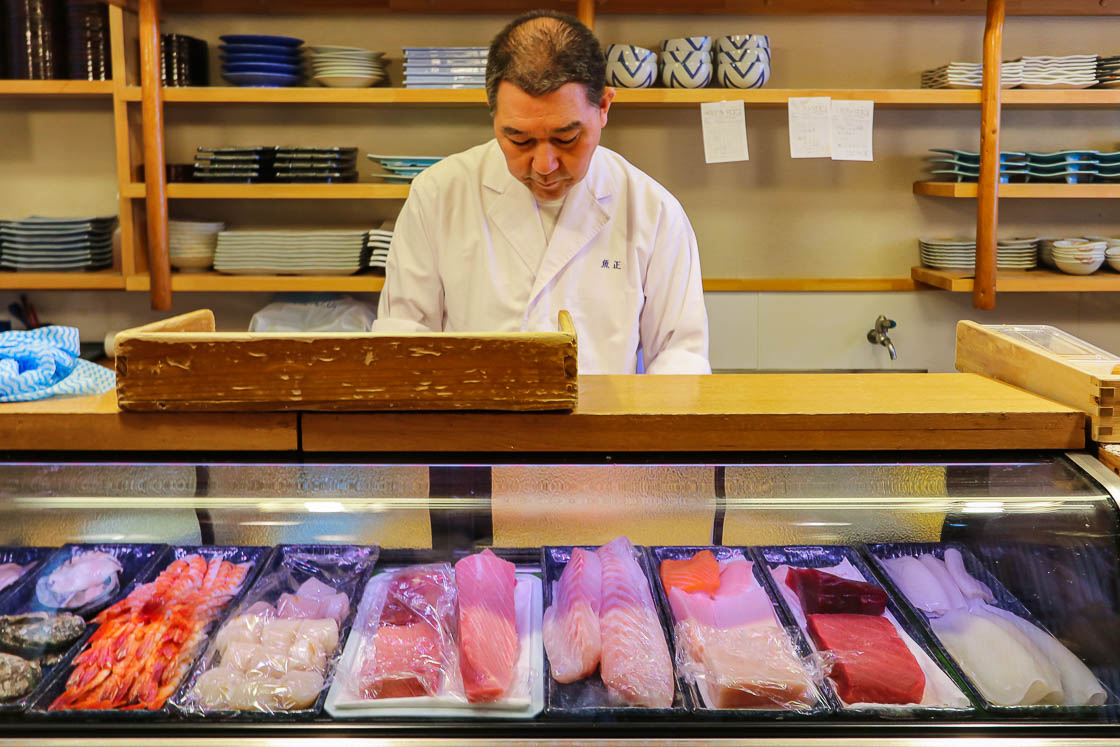

Upon arrival at Jodogahama, I take some time to learn about the area at the visitor center, before embarking on the coastal trail to the iconic beach, which takes about 15 minutes. Jodogahama translates to Pure Land Beach, and Pure Land is the Buddhist concept of paradise. Accordingly, Jodogahama Beach is a beautiful beach akin to the Buddhist paradise, with its white stone beach, calm waters and rocky islands jutting out of the ocean. The area suffered some damage during the 2011 tsunami with waters coming up to a height of 6.5 meters, but it didn't take long for the tourist facilities to be rebuilt.

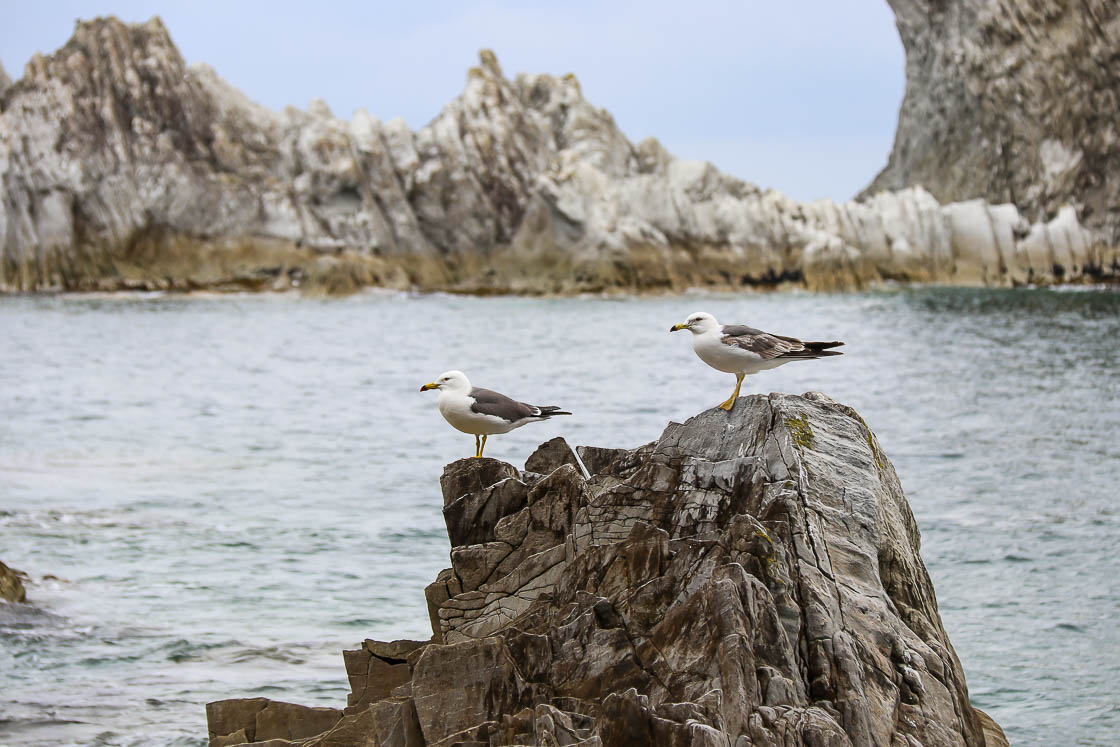
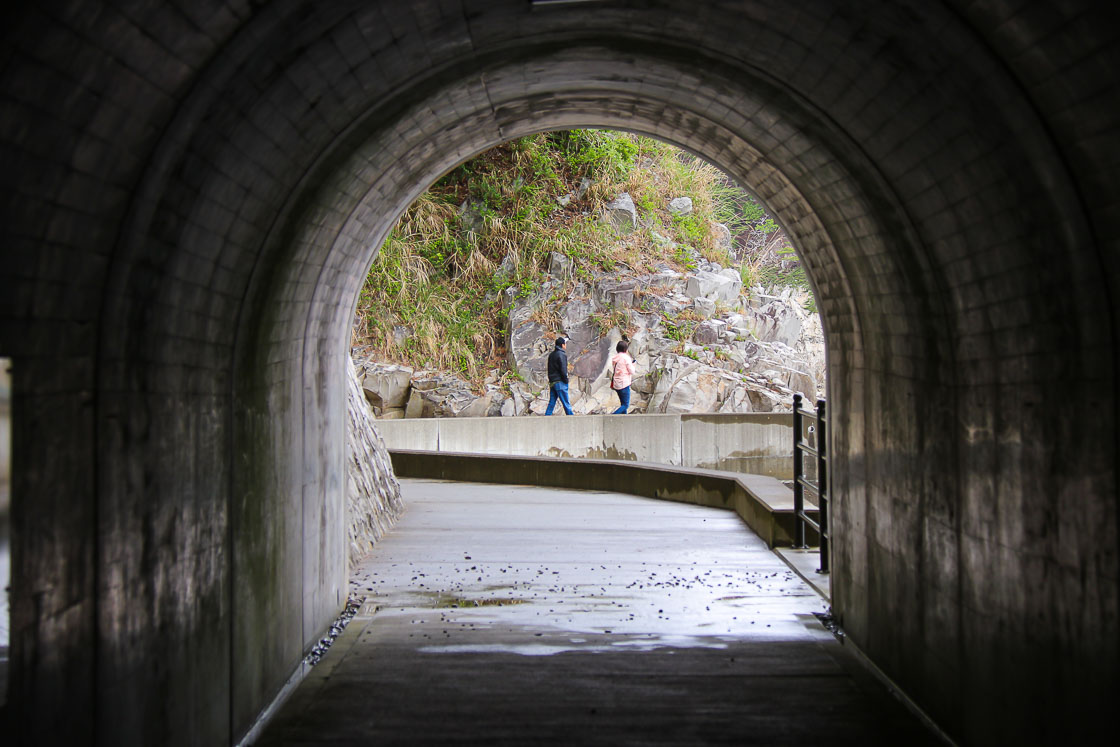

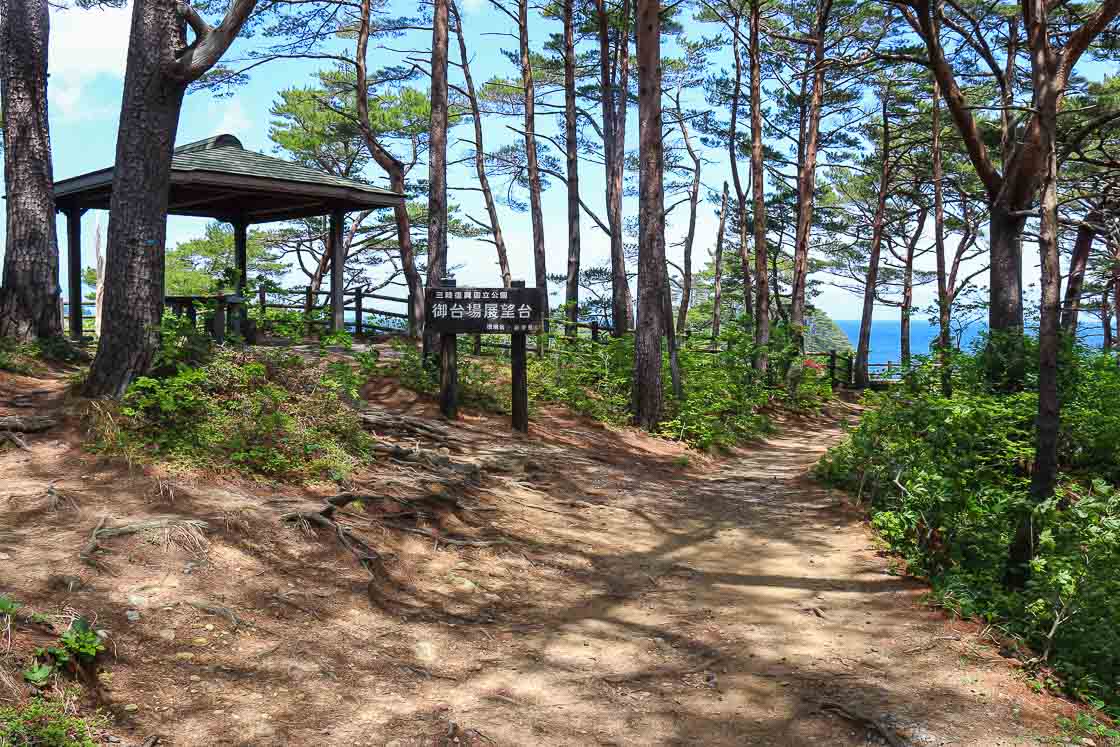

An approximately one hour drive from Miyako took me to Kitayamazaki, which is known for its dramatic sea cliffs. Alternatively, the Sanriku Railway, which offers panoramic views of the Pacific Ocean as it runs along the Sanriku coastline, also connects the two spots. The railway became a symbol of revival after the 2011 tsunami as it passes through many coastal towns that were badly damaged by the tsunami.
The approximately 8 kilometer long Kitayamazaki Coast features 200 meter tall cliffs, strangely shaped rock islands and curious sea caves, creating one of the most spectacular stretches of coastline in Japan. There are three observation decks at Kitayamazaki from where visitors can appreciate the views of the coastline. In addition to the observation decks, there is a trail of approximately 750 steps leading down to the waterline for those who want a more exciting view.
Not one to miss out on great views, I made my way down and was treated to an amazing bottom-up view of the tall cliffs and rock formations, which is only available to those who make the trek. Then I huffed and puffed my way back up the stairs back to my rental car. I had absolutely no regrets taking the path less traveled, as the breathtaking views made for a grand ending to my three days in Iwate Prefecture.
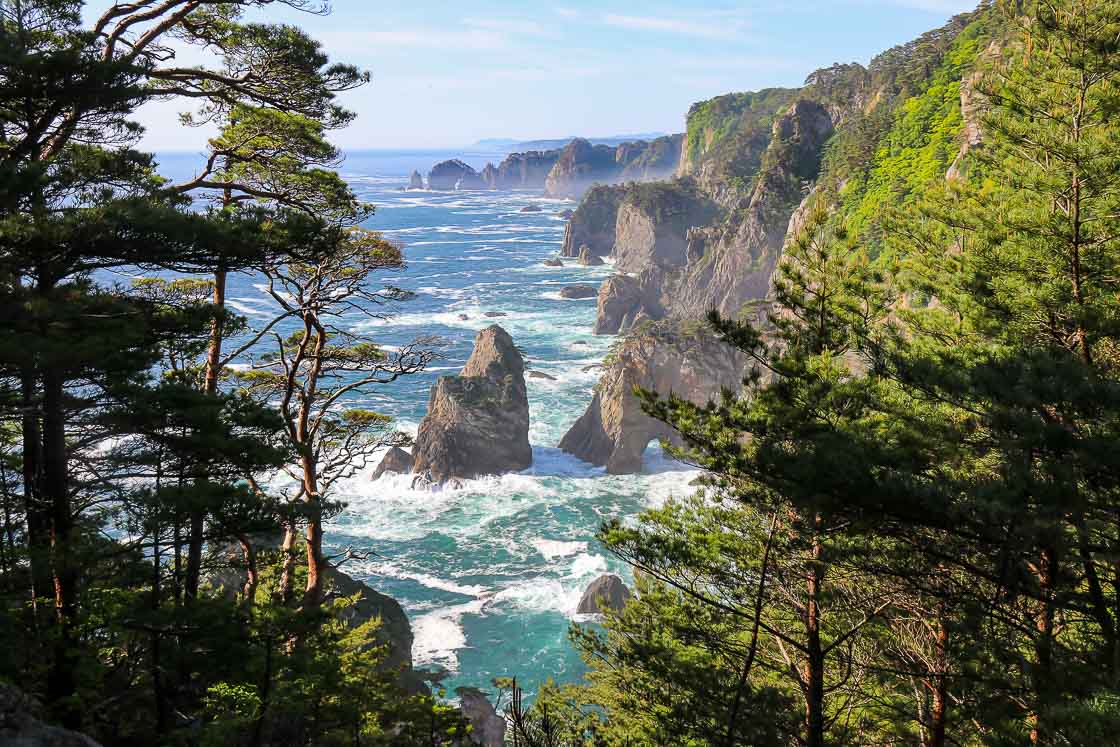
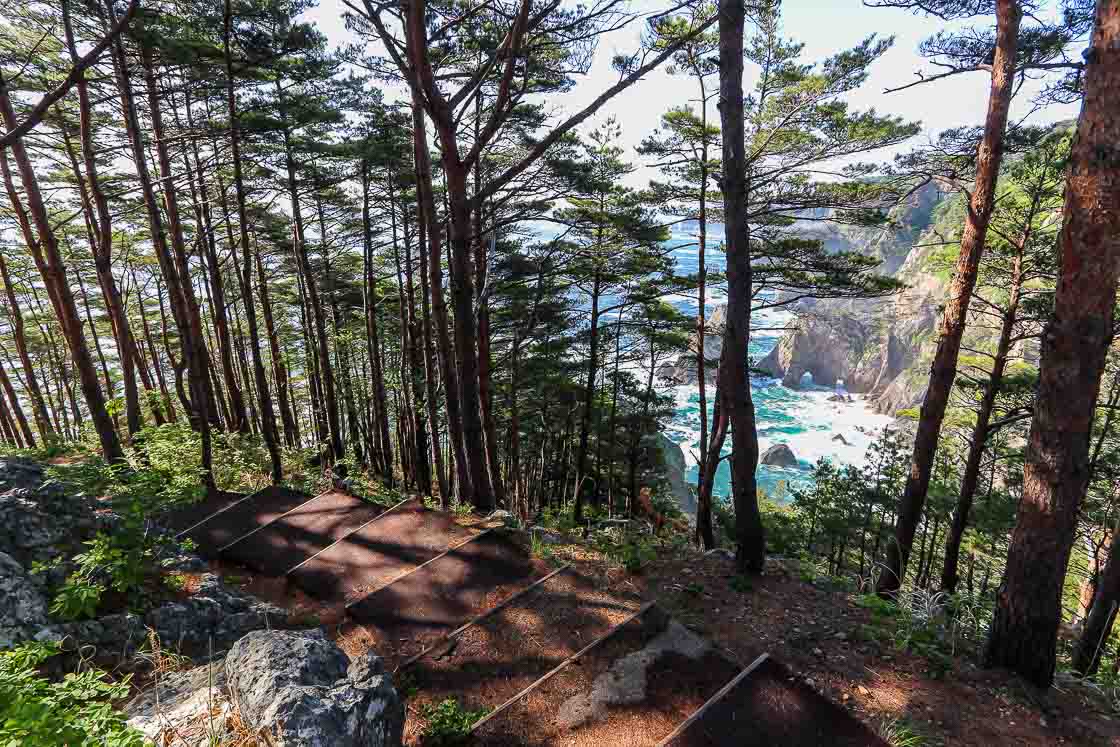
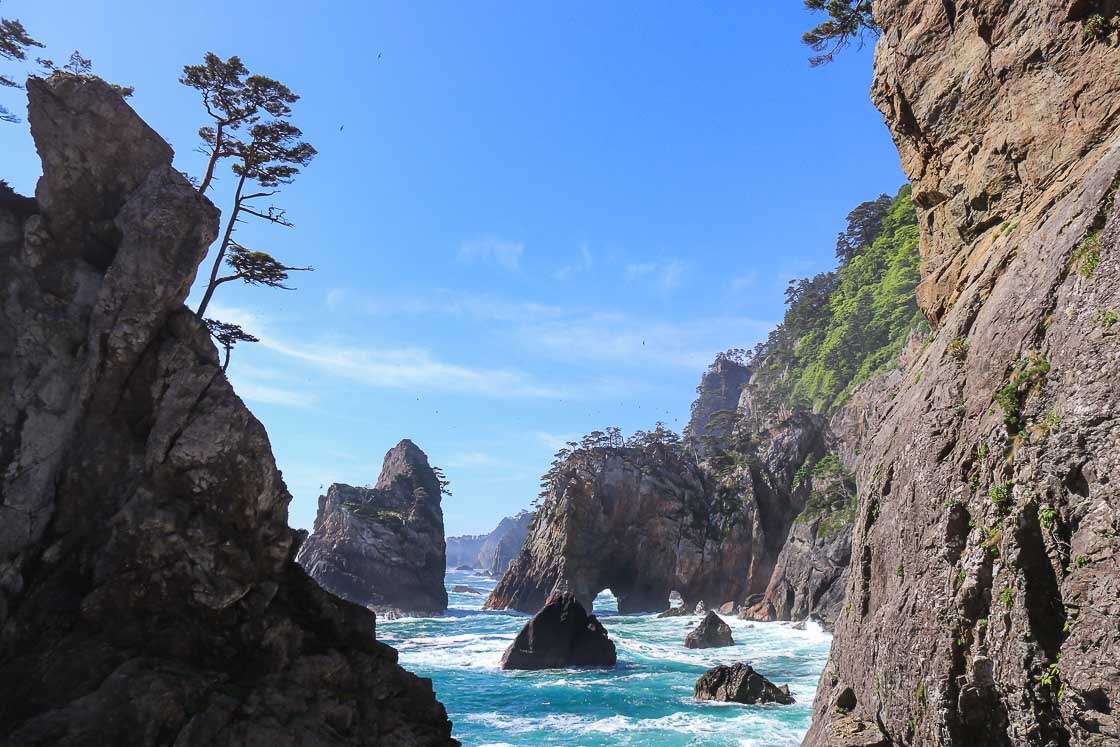
Access
How to get to and around Hiraizumi
Take the Tohoku Shinkansen from Tokyo and get off at Ichinoseki Station. From Ichinoseki Station, transfer to the JR Tohoku Line bound for Morioka to Hiraizumi Station (10 minutes one way). The one way journey takes 2 to 2.5 hours, costs about 13,000 yen one way and is fully covered by the Japan Rail Pass and the JR East Tohoku Area Pass.
In Hiraizumi, a rental bicycle is a convenient way to explore the town. Rental shops can be found near the train station. Electric bicycles and regular bicycles are available for rent, and prices start from 900 yen for four hours.
Cycling times
- Hiraizumi to Chusonji Temple: about 10 minutes
- Chusonji Temple to Takkoku no Iwaya: about 30 minutes
- Takkoku no Iwaya to Hiraizumi Station: about 30 minutes
Hiraizumi to Osawa Onsen
From Hiraizumi Station, take the JR Tohoku Line bound for Morioka and get off at Hanamaki Station (40 minutes, 860 yen one way). Transfer to the free shuttle bus for guests staying at the Hanamaki hot spring towns and get off at Osawa Onsen (30 minutes). There are only three shuttle bus departures between 15:00 and 17:30, and it is advisable to check the time schedule beforehand.
Osawa Onsen to Morioka
Take the free shuttle bus from Osawa Onsen to Shin-Hanamaki Station (40-50 minutes). Transfer to the Tohoku Shinkansen at Shin-Hanamaki Station and get off at Morioka. The one way journey takes about 15 minutes and costs 1560 yen for an unreserved seat. The train journey is fully covered by the Japan Rail Pass and the JR East Tohoku Area Pass.
How to get around Morioka
Morioka Station is the main transportation hub in the capital city. The downtown core of central Morioka is an approximately 15 minute walk from the station. All the spots visited in this article are no more than a 20 minute walk from one another.
How to get to and around Miyako
From Morioka Station, take the JR Yamada Line to Miyako (2.5 hours, 1980 yen one way).
Miyako Port is approximately 30 minutes on foot from the station.
The Uminekomaru sightseeing cruise connects Jodogahama and Desaki Pier in Miyako Port. The one way boat ride to Jodogahama takes ten minutes and costs 500 yen. A round trip, which includes a free stopover at Jodogahama and a short cruise of the bay, costs 1500 yen. Alternatively, there are 1-2 buses an hour between Miyako and Jodogahama.
Miyako to Kitayamazaki
A rental car is the more convenient option of getting to Kitayamazaki, and rental car outlets can be found around Miyako Station. The Kitayamazaki Observation Deck is approximately an hour drive north of Miyako Port and Jodogahama.
